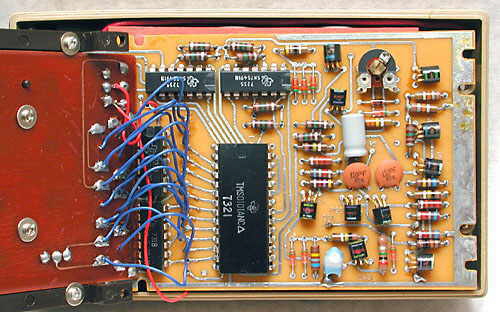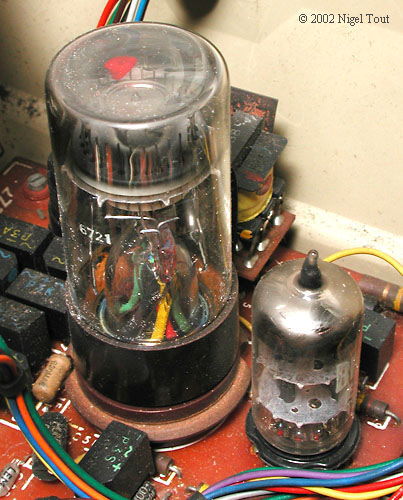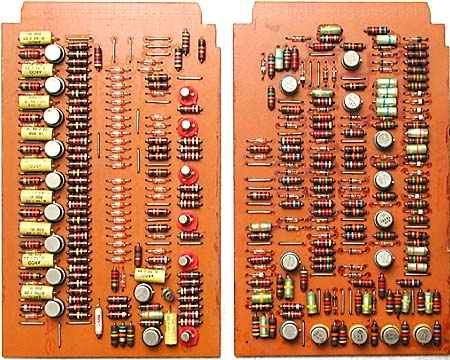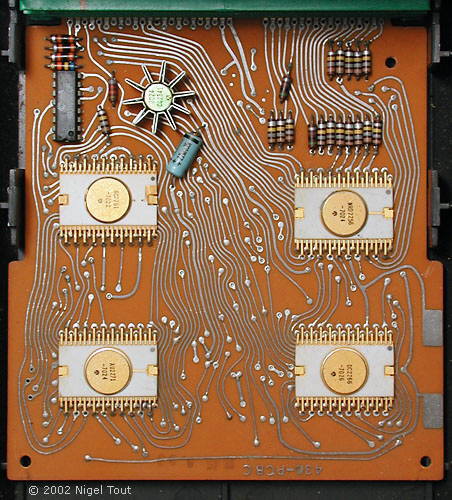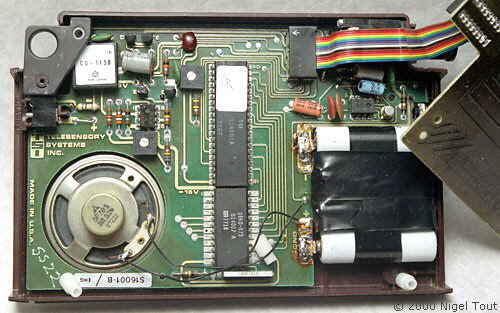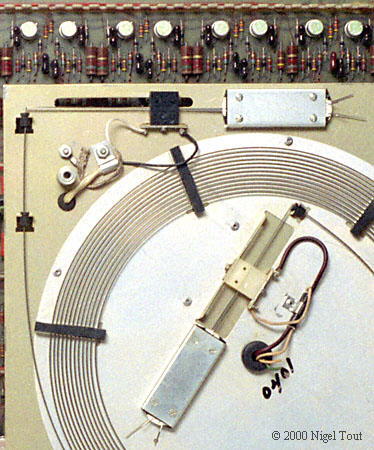Calculator Electronics
Early electronic calculators was different to that used in modern calculators. The pages in this section describe some of these earlier technologies, including:
1) Identifying Electronic Calculator Components
Many of the components inside electronic calculators of the 1960s and 1970s are much different to the highly integrated, miniature, surface-mount components inside modern electronic products.
Here is a guide to the types of components that you might find.
Click on the picture to go to the page with more details.
2) Vacuum Tubes, Cold-cathode Tubes, & Dekatrons
The early computers of the 1940s and 1950s used vacuum tube (thermionic valve) technology. So it is no surprise that the first commercially successful electronic desktop calculators, the Anita Mk VII and Anita Mk 8 calculators of 1961, made use of these devices together with Dekatrons and Cold-cathode Tubes.
Click on the picture to go to the page with more details.
Close up of the "Dekatron" decade counter tube in an Anita Mk 8, with a small thermionic valve (vacuum tube) to its right.
The first calculators to use transistors in the calculating circuits were introduced in 1964. These used hundreds of Germanium transistors and diodes.
Click on the picture to go to the page with more details.
Two of the 24 circuit boards in an IME 26, with rows of Germanium transistors, diodes, resistors, and capacitors.
Integrating several transistors and other components in one semiconductor device to produce an integrated circuit was first performed by Jack Kilby of Texas Instruments in 1958. They started to be used in calculators from the mid 1960s.
From about 1965 to about 1971 the development of integrated circuits for calculators was at the leading edge of electronics research, taking place almost exclusively in the U.S.A.
Click on the picture to go to the page with more details.
5) Calculators and the Microprocessor
In the late 1960s Intel Corporation, then a new company at the forefront of semiconductor memory development, took on a contract from Busicom of Japan to produce a series of integrated circuits for the varying specifications of a new range calculators. They decided instead to produce one general purpose processing unit, the Intel 4004, the first commercially successful microprocessor.
Click on the picture to go to the page with more details.
6) Calculator Memory Technologies
Semiconductor memory was very expensive in the 1960s, so alternative technologies were often used, such as delay line memories and magnetic core memories.
Click on the picture to go to the page with more details.
Delay line memory used in the Monroe Epic 3000 programmable calculator.
Calculator Technology
Vintage Calculators
Text & photographs copyright, except where stated otherwise, © Nigel Tout 2000-2025.
